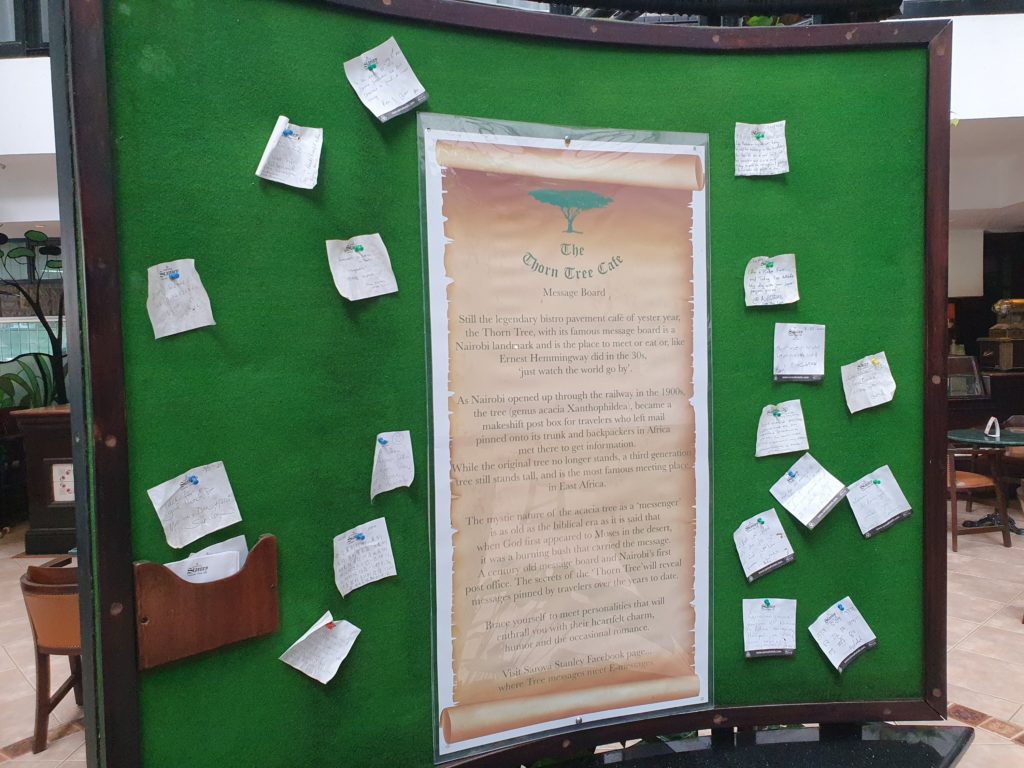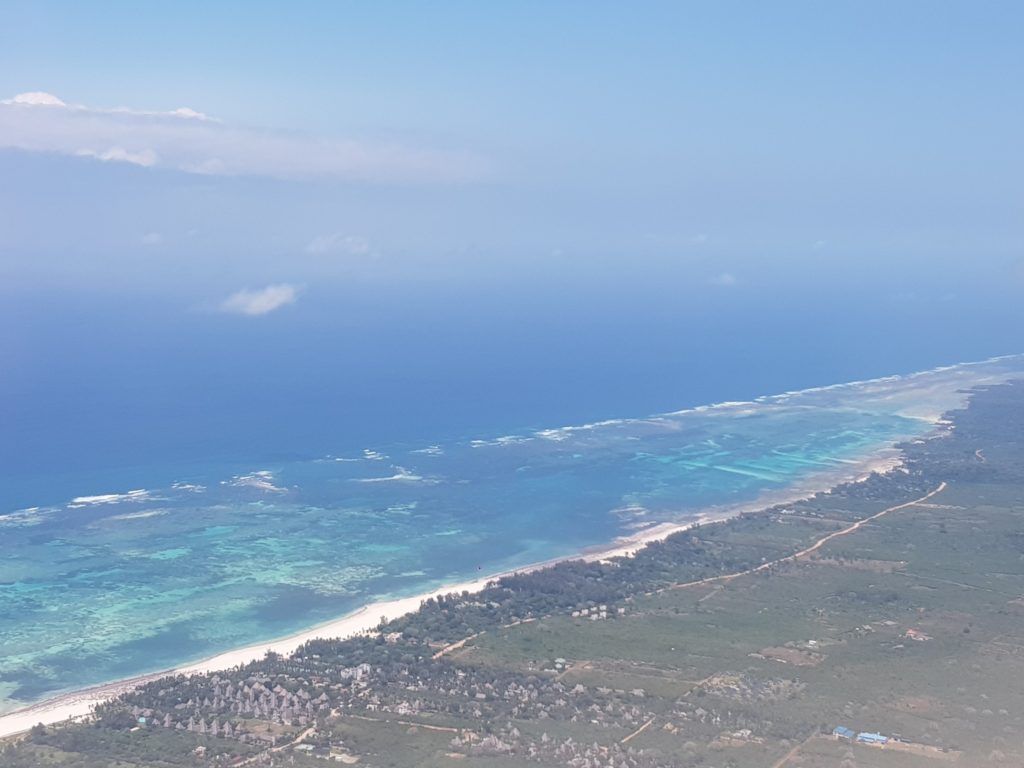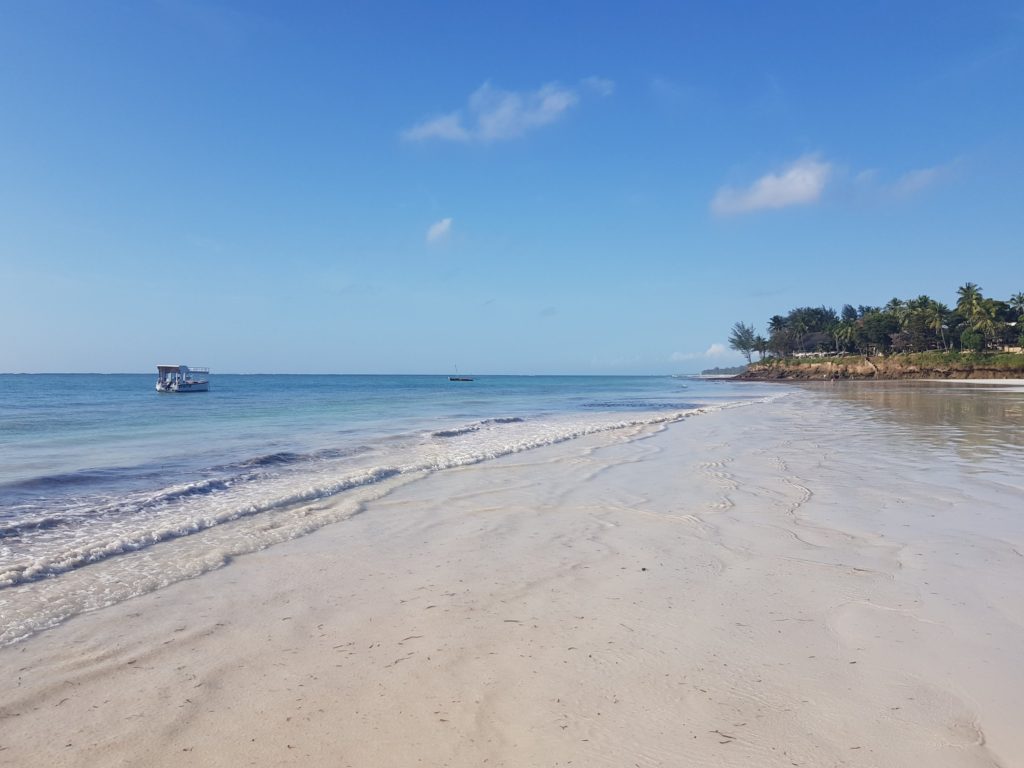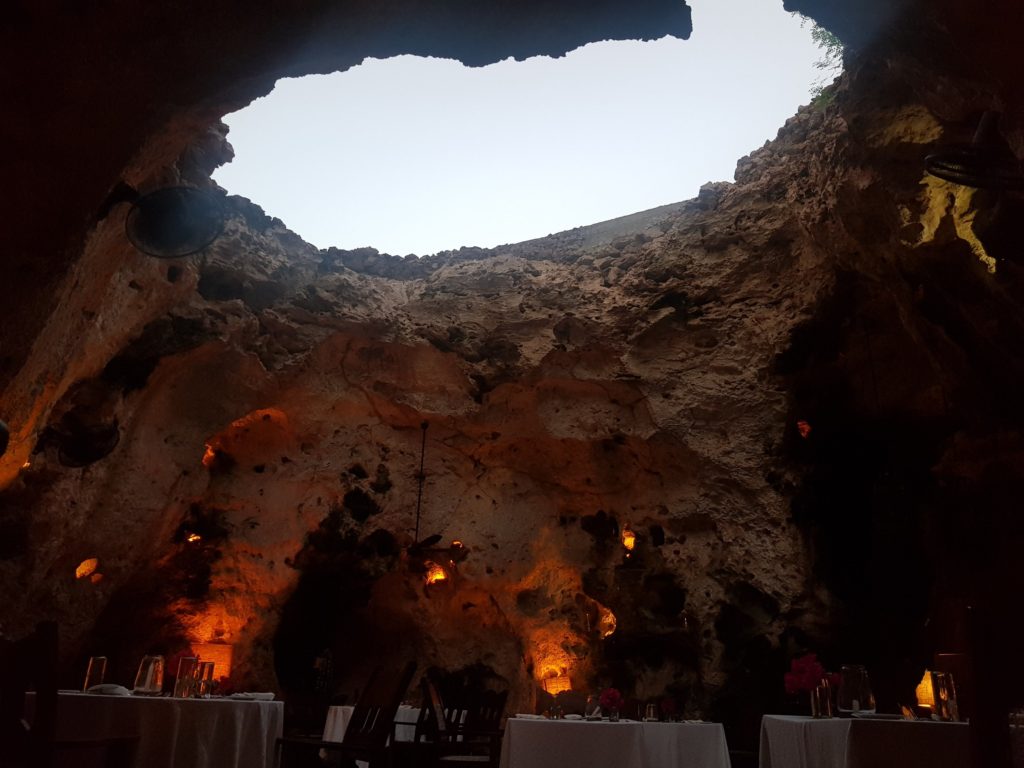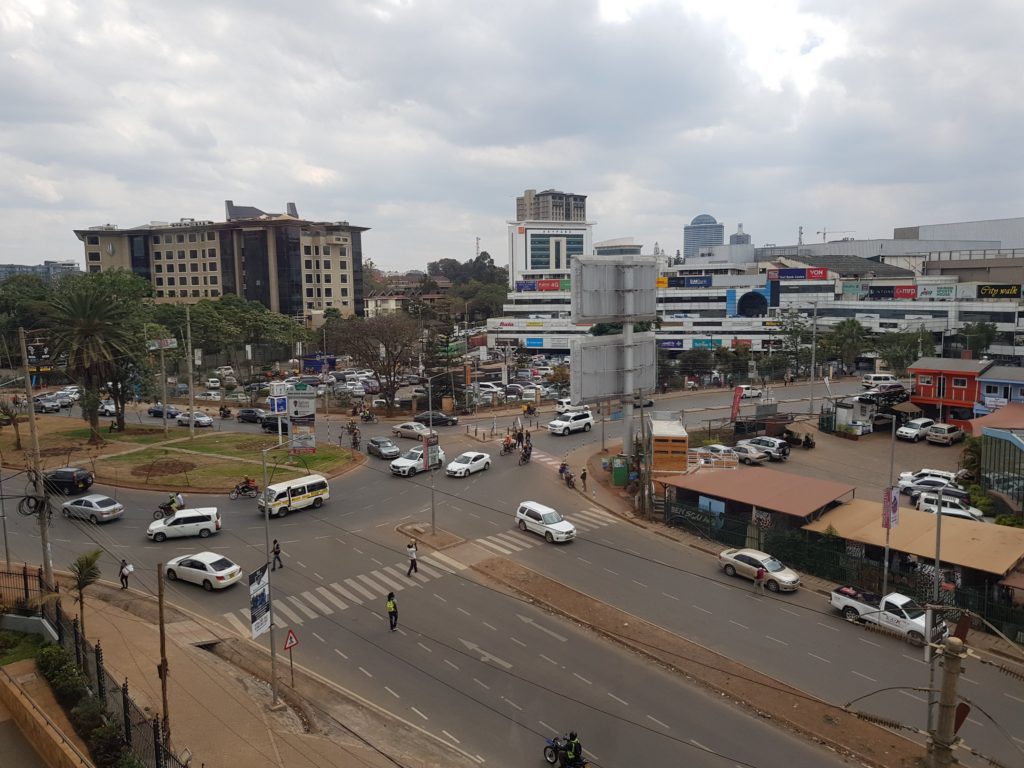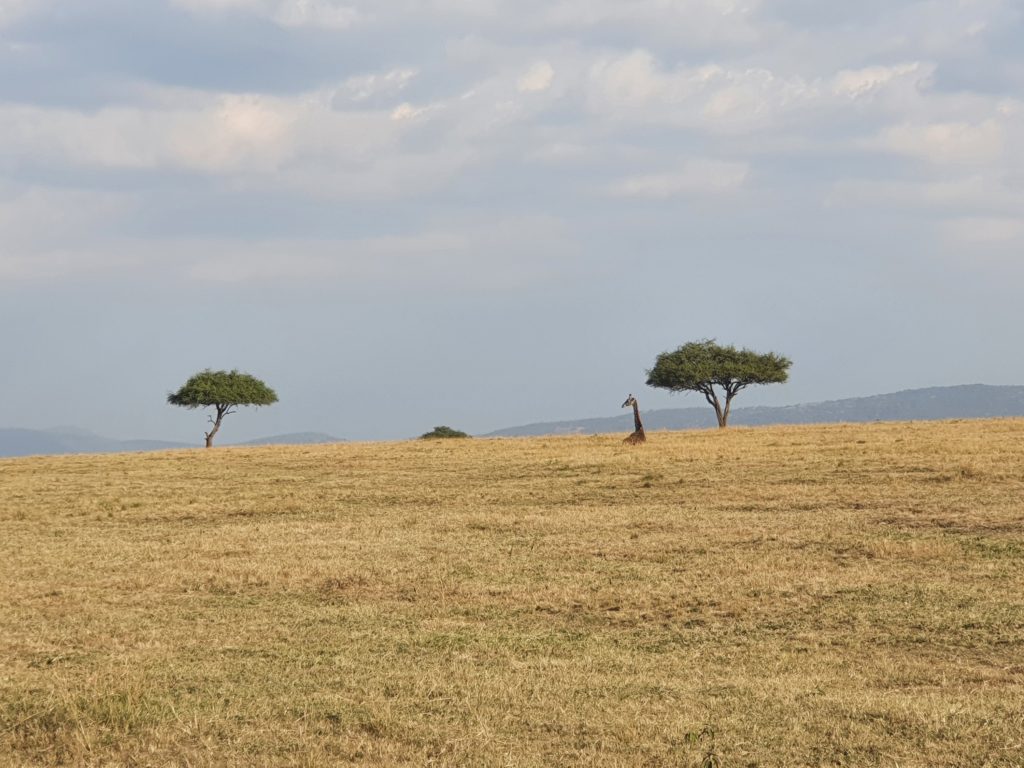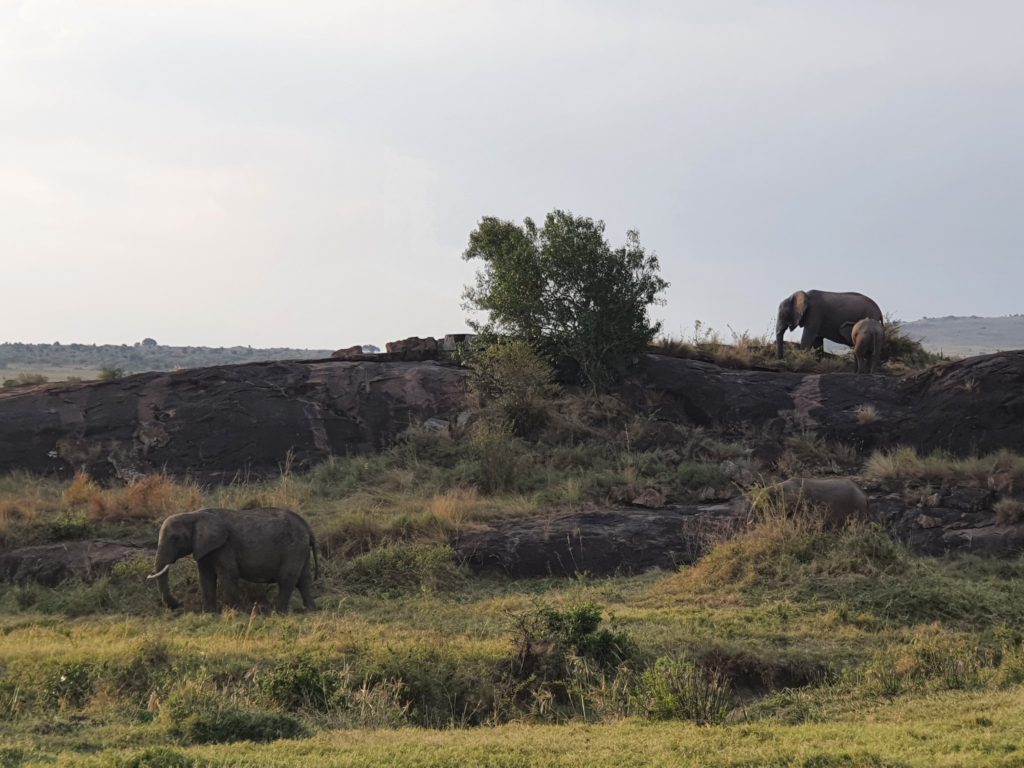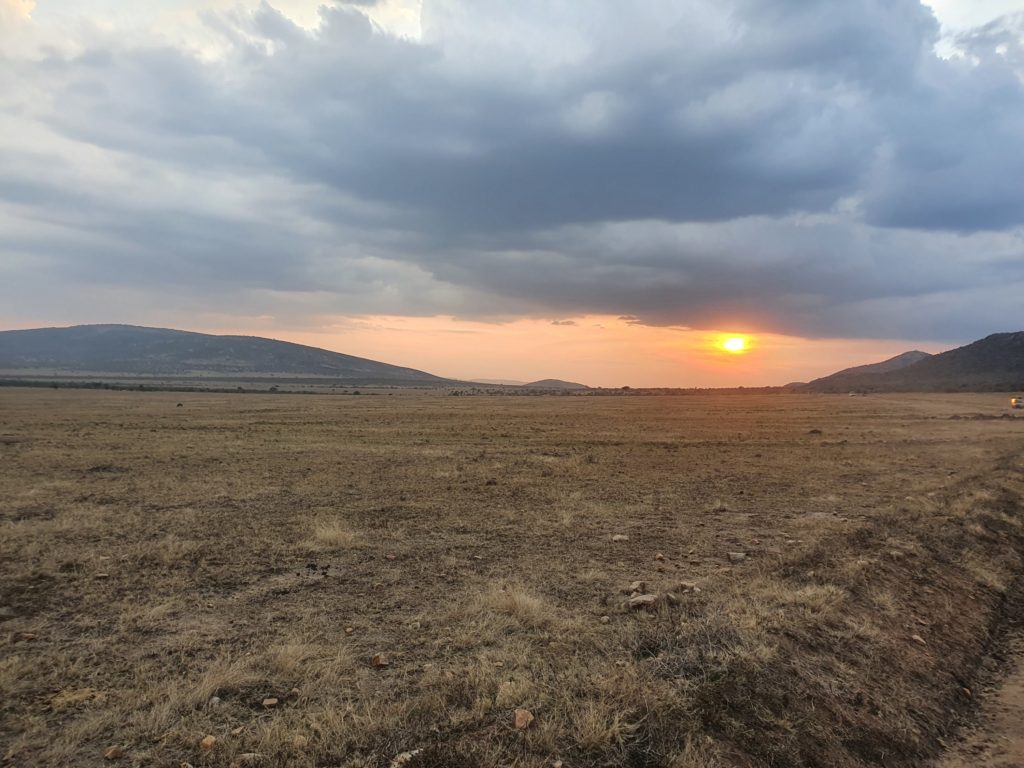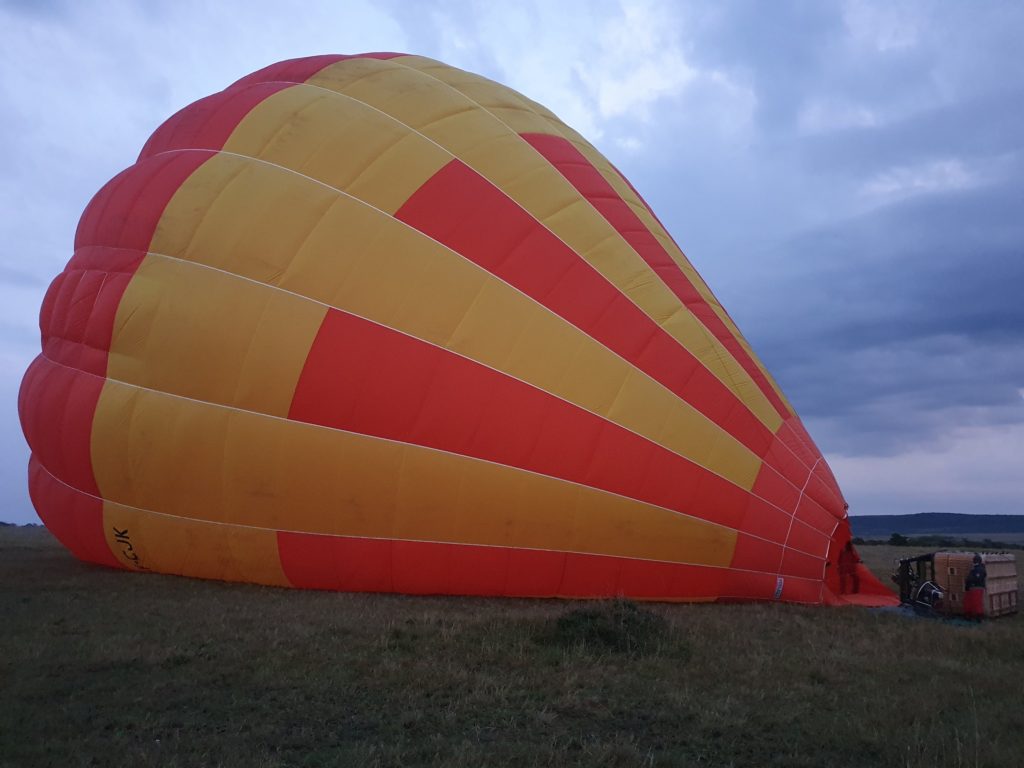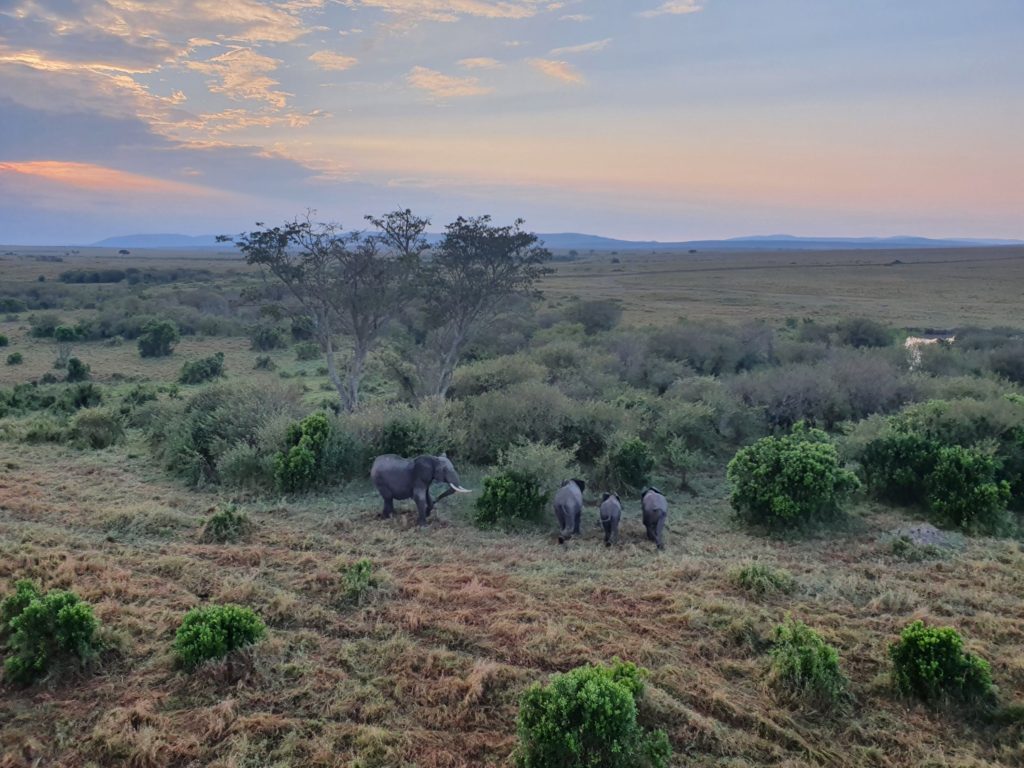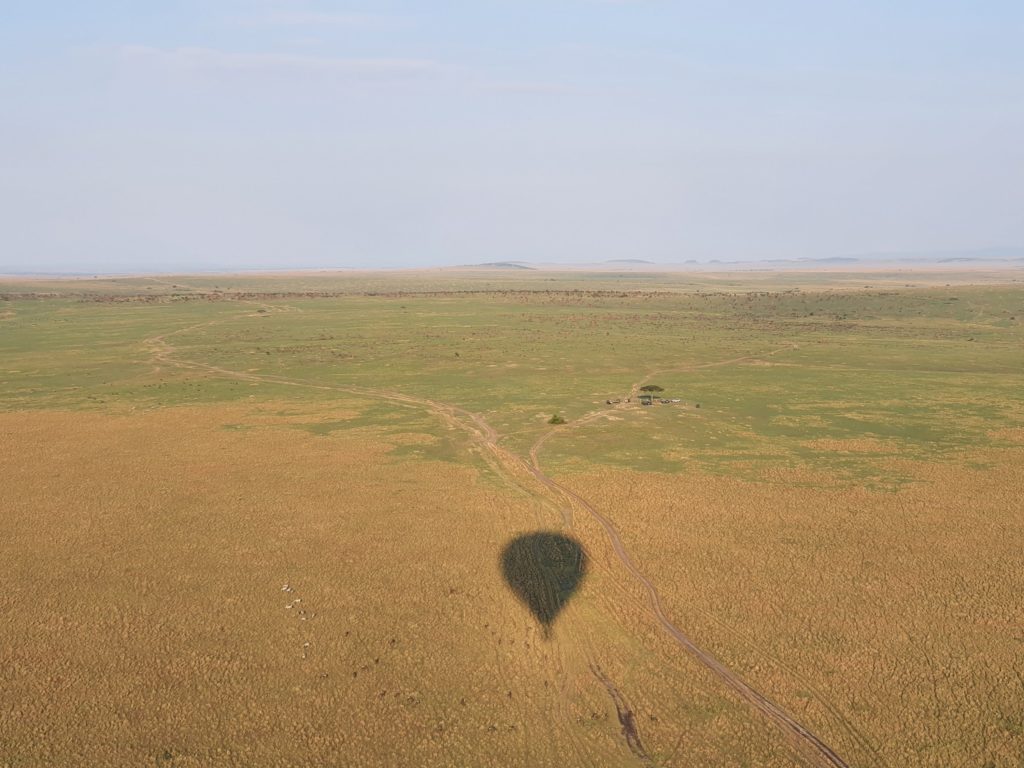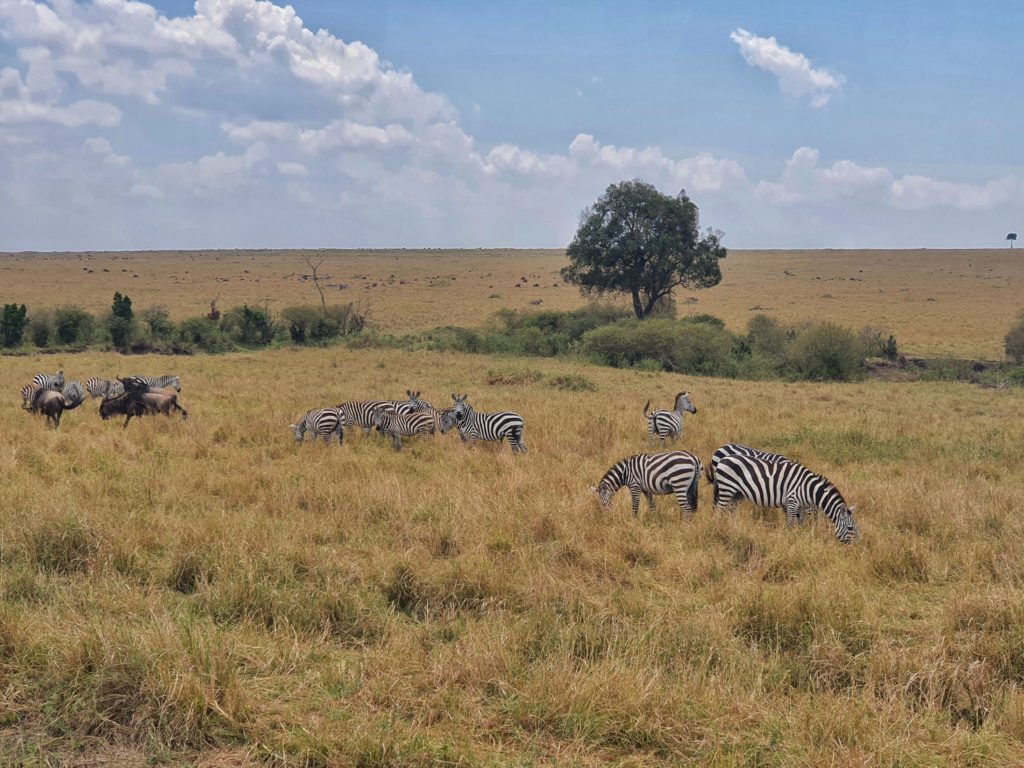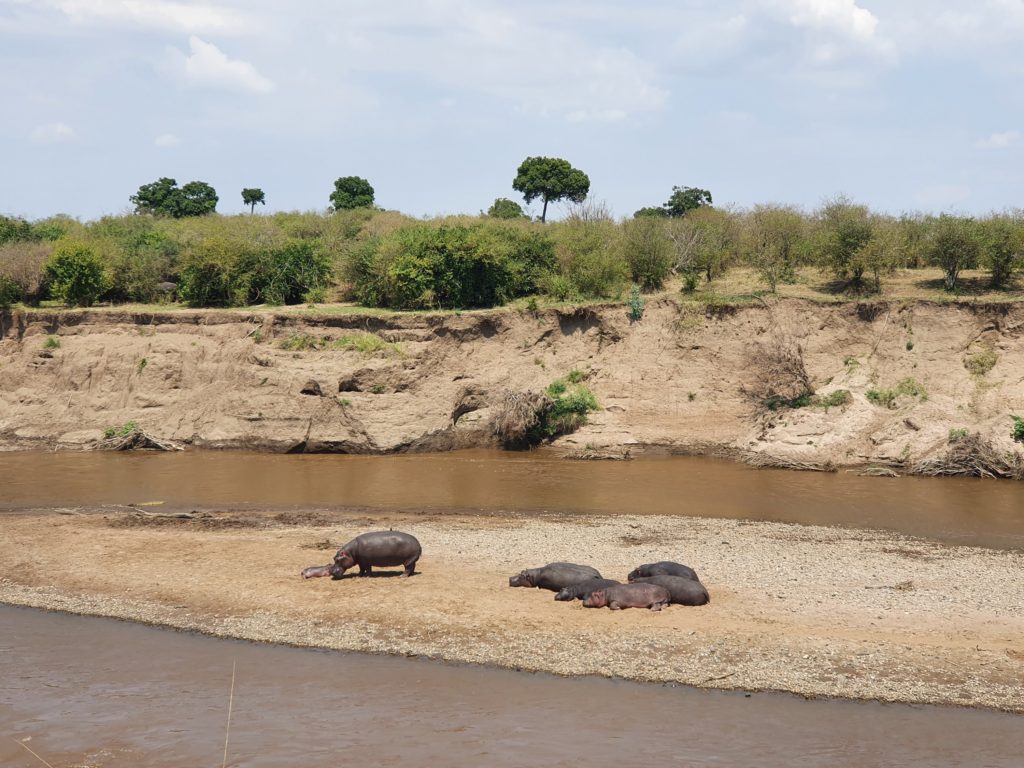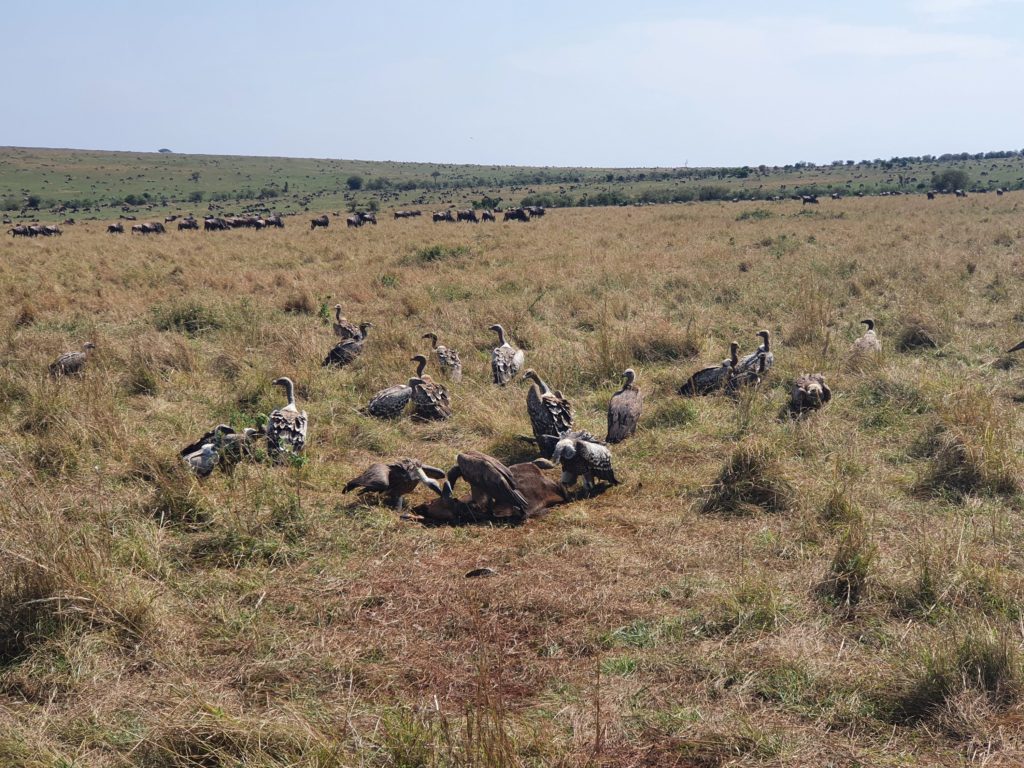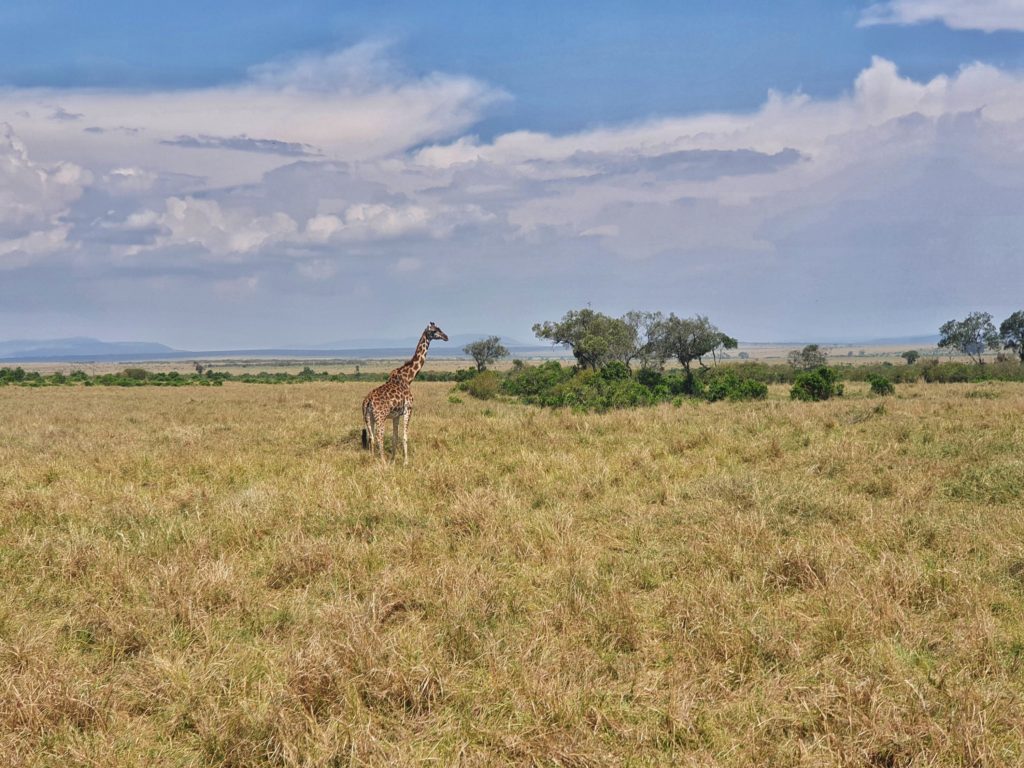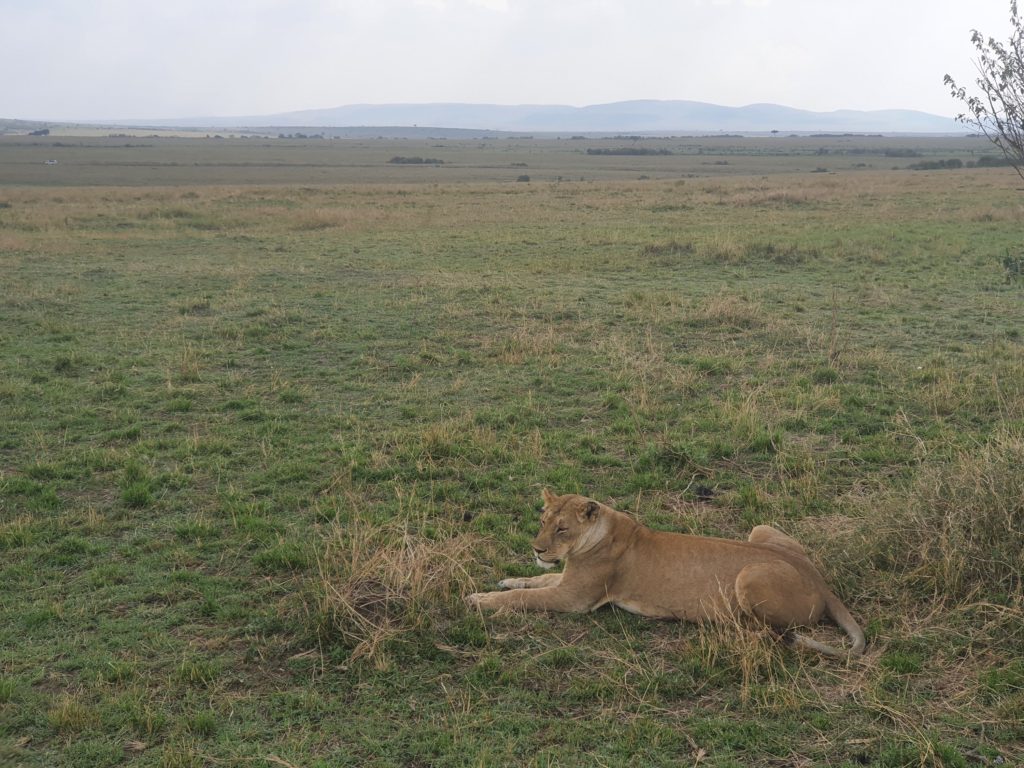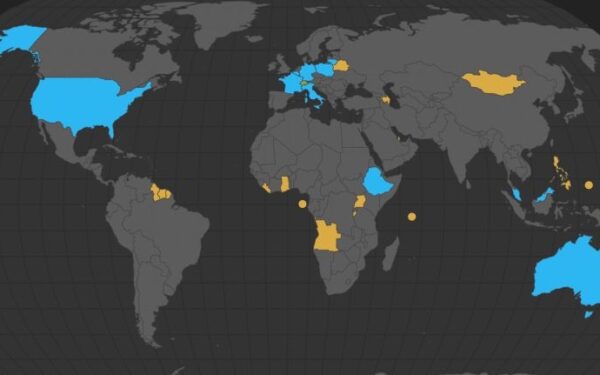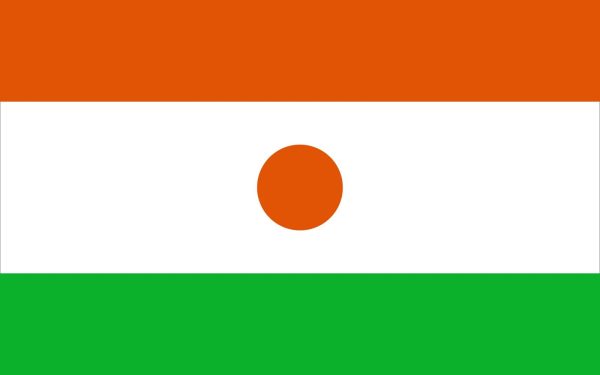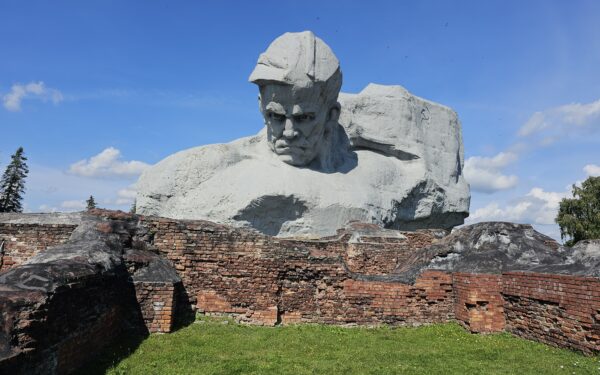Trip Report: Kenya
Visited in August 2020
I don’t know who was more euphoric when I left the arrival hall of Nairobi’s Jomo Kenyatta International Airport. Me or the hotel employee who welcomed us outside the airport building.
I had just entered my 105th country: Kenya. Considering all the countries I have already visited, this would not have been a reason to be euphoric. However, we are now in the year 2020 and since March my travel plans outside of Europe had come to a standstill. For a long time it was uncertain whether I could leave Europe this year. With only three countries left in Europe, this would have become a problem in the schedule of my 197-project.
I really celebrated the moment when I read the news that Kenya would reopen its borders for tourists in August. From that moment on I knew that my travels outside of Europe would continue rather sooner than later. Besides Kenya, I visited Rwanda on this trip. Since I spent the first day in Kenya, Kenya became my 105th country and not Rwanda.
Now that my euphoria has been explained, we move on to the euphoria of the hotel employee. The man told us right after we met that he had only been back at work for two weeks and had spent more than four months at home. Without pay, of course. He was all the more happy that guests are now coming back to his country.
“This will all be over in November and things will be normal again,” he said confidently. On the one hand, his optimism made me happy, but on the other hand I felt a little sorry for his naivety. Many countries that depend on tourism think that tourists will knock down their doors as soon as they reopen their borders. After a few weeks, however, these countries realize with consternation that their ideas do not quite correspond to reality. Kenya, too, will be lucky if tourism will be at the 2019-level in 2023. It will not happen in 2021, though.
And that brings us to another point: in the times of COVID-19 a new phenomenon has spread, called traveler shaming. People accuse other people that their travel is only making the pandemic worse. And while it cannot be denied that without travel there would be no pandemic, this is only one side of the coin.
For many Kenyans, for example, it is not the pandemic that is the biggest concern, but how to bring food to the table. A concern that has become a serious reality for many Kenyans in recent months. After all, many jobs in Kenya are directly or indirectly depending on tourism. Thus, for many people in the world the lockdown and closed borders are a much greater danger than the virus.
While it is easy for us people in the West to work from home and reduce our social contacts, this does not apply to many people in the world. Staying home and just wait until everything will be over will most likely mean great misery and even death for some of these people. This is the other side of the coin.
One day in Nairobi
However, Covid-19 also affects tourists in Kenya, sometimes positively and sometimes negatively. On the positive side, hotel prices in the capital Nairobi are at rock bottom. For a 5-star hotel you pay between 100-150 USD per night, which is allegedly unusual for the rather expensive city. Plus, safari prices are incredibly cheap.
On the negative side, many places are not open in the capital. For example the Kenyatta International Conference Centre with its helicopter platform, where you have a great view over Nairobi. Also, some hotels are closed in the capital. By the way, Kenya, just like Rwanda, has a strict mask obligation, which applies everywhere except inside your accommodation.
Therefore, we also wore our masks when we used our first day in East Africa to see a little bit of Kenya’s capital. I don’t know if it was because of the compulsory masks, or the rain, or because it was Monday. But pretty much everyone in Nairobi’s Central Business District had a grim face hidden behind their mask. That actually fit very well to this rather ugly district where we spent a few hours.
It was also quite cool in Nairobi. The city is located at over 1,700 meters and especially in the morning and evening hours the temperatures dropped to about 13-14°C. For some Kenyans this is apparently cold enough to dress as if they were going on an Antarctica expedition.
Since it was not possible to visit the KICC, we wandered a bit aimlessly through the streets of the CBD instead. There was not much to see. The district was hectic, busy and the traffic was at least as bad as in the rest of the city.
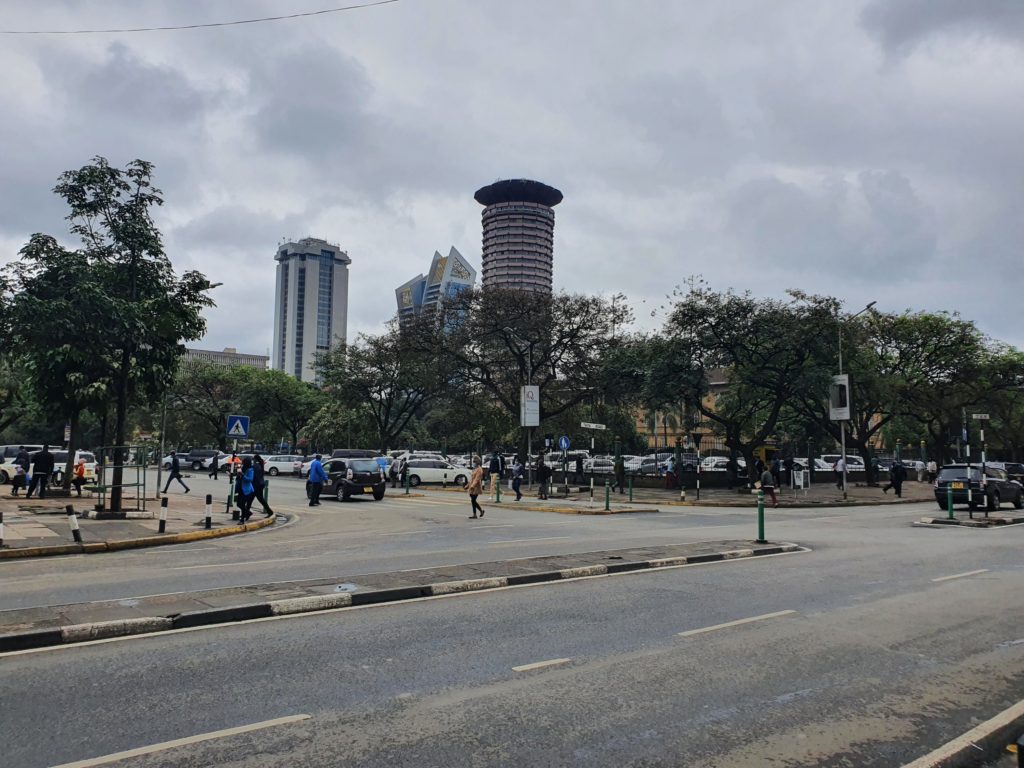
By the way, I took photos in a very discreet way, as I heard that the police sometimes interpret photographing tourists as an additional payday. In general, Nairobi does not really have a good reputation. That’s why it is difficult to write about the city without mentioning its nickname Nairobbery. I have met several travelers who have had bad experiences in Nairobi in some way. Therefore, I was not really unhappy that our stay in Nairobi was limited to a minimum.
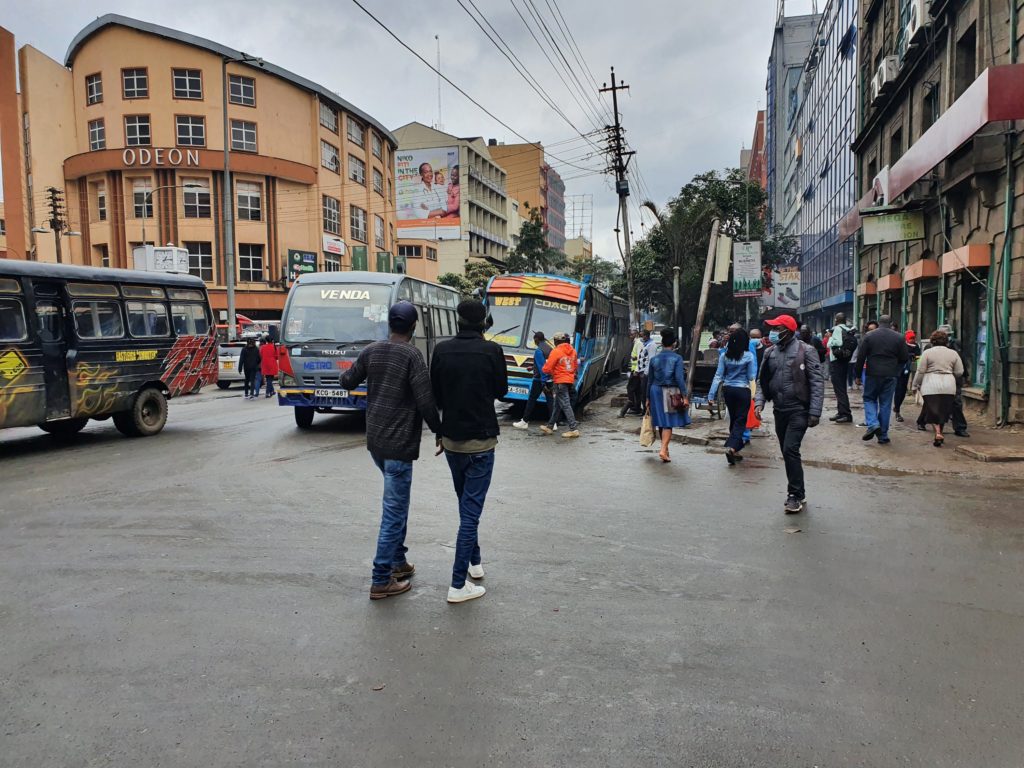
As a highlight I could mention the Thorn Tree Café. Yep, that’s the place that gave the message board of Lonely Planet its name. There we had a (at most) mediocre coffee and admired the pinboard in the middle of the café.
I also found the gigantic birds interesting, apparently Marabou Storks, which can be found in abundance in Kenya’s capital and besiege whole rows of trees. But apart from that it was more than okay for me to leave the CBD again after a few hours.
In general, I have to say that most capitals in Africa should not be the reason for visiting the respective country. Nairobi is no exception. Although my time in the Kenyan capital was probably too short to be able to write a real conclusion about it, it became clear in this short time that there are definitely better places in Kenya.
Jambo Diani!
We spent the next week in Rwanda before returning to Kenya. Since we arrived in Nairobi in the evening and continued our travels the next morning, there was no time left to go back to the city center. That was okay, though, as the next place we visited was much prettier than Nairobi…
Kenya is located on the coast of the Indian Ocean. That means: wonderful white beaches next to turquoise-blue water. One of the most expensive resorts at Diani Beach, probably the most touristy beach at Kenya’s coast, should be our home for the next two days. For many people this would probably be the definition of paradise.
The beach did not disappoint. Diani Beach is indeed an incredibly beautiful beach. But there was only one problem: the beach boys! Beach boys are young men who offer tourists boat trips, souvenirs, coconuts, drinks, drugs or sex. Mostly in a very pushy way.
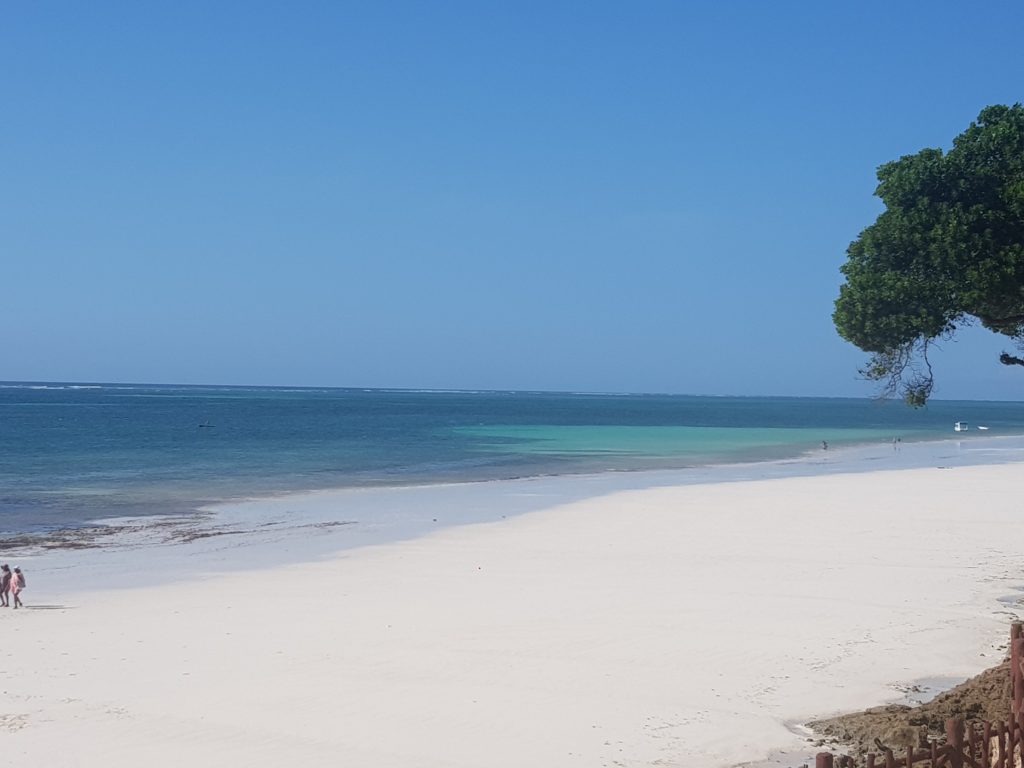
I found the beach boys already annoying when I was in Zanzibar about ten months ago. This was not a problem at that time, because the boys had a lot more tourists to approach back then. This time we were the only tourists on the beach. Therefore, a short stroll up and down the beach included several approaches by the beach boys.
Basically, I don’t condemn the behavior of these beach boys, because they try to make money somehow and the tourists are their main source of income. Plus, the situation at the beaches around Mombasa is quite bad at the moment. The number of tourists has decreased massively, many hotels have closed and so these young men can’t sell anything.
Nevertheless, in times of Covid-19 I found it disturbing to have a local (without mask) 30cm next to my face all the time. Moreover, the tenacity of these people is immense. It goes without saying that these people do not accept a simple “no” and follow you wherever you go.
In dealing with the beach boys you can follow two strategies. Either you are a dick and ignore them until they give up at some point, or you engage in a conversation. The problem is that with the second strategy you will lose sooner or later…
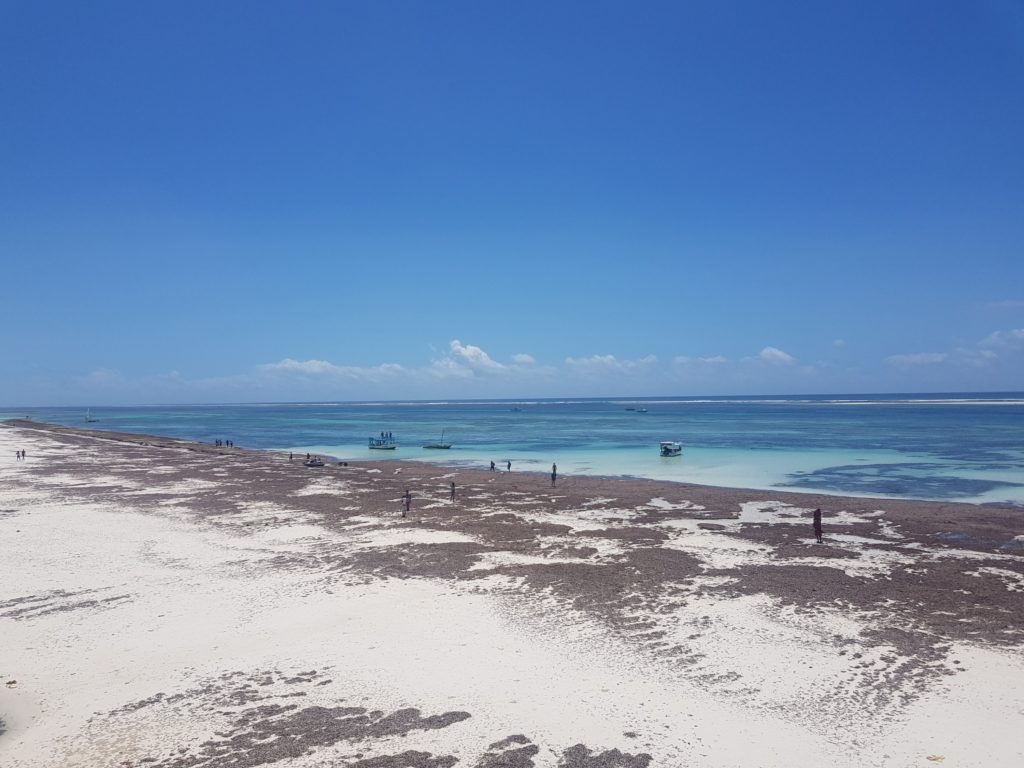
We had two quite friendly and humorous men who followed us for half an hour or more. Funnily enough, they could speak German quite well and also had several idioms in their repertoire, which caused some laughter from time to time. In the end, of course, these men do not accompany you to make sure you have a good time…
It is a sales talk that they build up very professionally. And although I have experienced situations like this countless times, I am still amazed that I fall for it again and again. With these men, after a long back and forth, I bought a bracelet that I actually found quite ugly at a more expensive price than I would pay in Switzerland. I bought it out of pity to be honest.
The problem is that these men are professionals. They have been doing their business for years and have perfected it. They first say that they are only honest businessmen and want to win customers here so that they don’t have to steal or beg. However, it will sooner or later turn out that they are nothing but beggars. Because the begging will follow as soon as they realize that the tourists will not buy anything from them.
If someone then persistently asks that you should buy something from him, since he would have to feed his children after all, you must have a heart of stone to say no. After all, you now know them for over half an hour, laughed with them and spent a good time together. Or in other words: they are no longer strangers and you don’t want to disappoint your new “friends”.
Again, these beach boys have my fullest understanding. I would probably do the same if I was in their situation. Nevertheless, I found Diani Beach quite exhausting for this very reason and as a result, I avoided the beach relatively quickly and stayed at my resort.
I wish I could say that I enjoyed my time at least there…
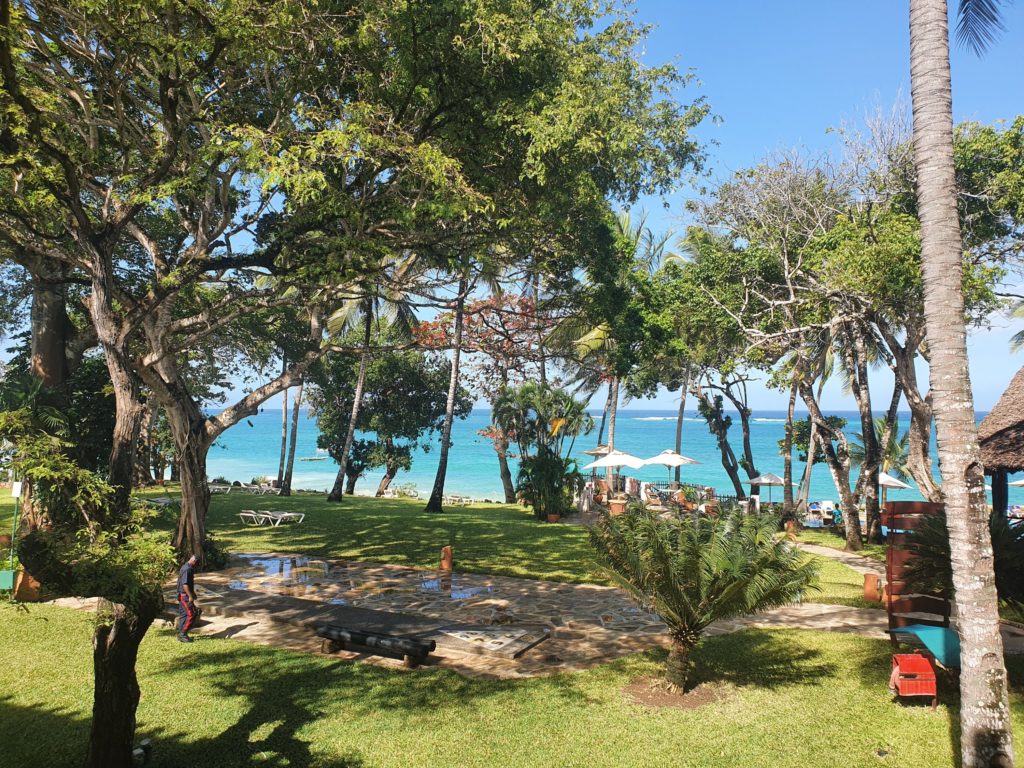
It was an all-inclusive resort. The last time I was in such a resort was somewhere near Antalya when I was 13 years old. My thought when I booked the resort was that the risk of virus transmission is reduced even more if the same kitchen serves the food every day than if you always eat at a different place.
However, in an all-inclusive resort the deepest abysses of humanity are quickly revealed. People who stack their plates at the buffet like the petite young woman, about 1.60m tall, who piles four pieces of cake and other sweets on her plate at the dessert buffet, while I wonder how she can eat all this.
The sad truth is that I find myself adapting to this behavior. I also stack the plates, stuff kilograms of food into me and still leave half of it at the end. Probably such a behavior in the end is just… human. Nevertheless, it becomes clear to me after one day why I avoided hotels like this for years like the plague.
Not only the gluttony in the hotel restaurant got on my nerves but also almost everything else in this resort. For example, the animators who perform every few hours next to the pool and dance to YMCA (or even worse: to Jambo Bwana from the Safari Sound Band). Funnily enough, most other guests seem to enjoy these performances.
Sex tourism is omnipresent, too. So I observe several “couples” consisting of white men and black women, in many cases the age difference of the two must be about 50 years. By the way, the beaches around Mombasa are also known for female sex tourism. However, I have not seen a 65-year-old European woman walking hand in hand with a 25-year-old Kenyan along the beach. Fortunately, as I have seen enough of that in the Gambia.
In hindsight, I would call my days at Kenya’s coast the ones I liked the least on this trip. I could enjoy the beach only in the early morning hours without being bothered by the beach boys, and my hotel sucked, too. Therefore, it was okay for me to leave Diani Beach after two days.
I still think that Diani Beach is a cool place to visit. Perhaps, it is just better to wait until tourism has recovered and you are not the only tourist on the beach. I know it’s a vicious circle, because after all I already referred to the effects of the lack of tourism. Anyway, I just want to point out that comfortable beach vacations are probably not possible on Diani Beach at the moment.
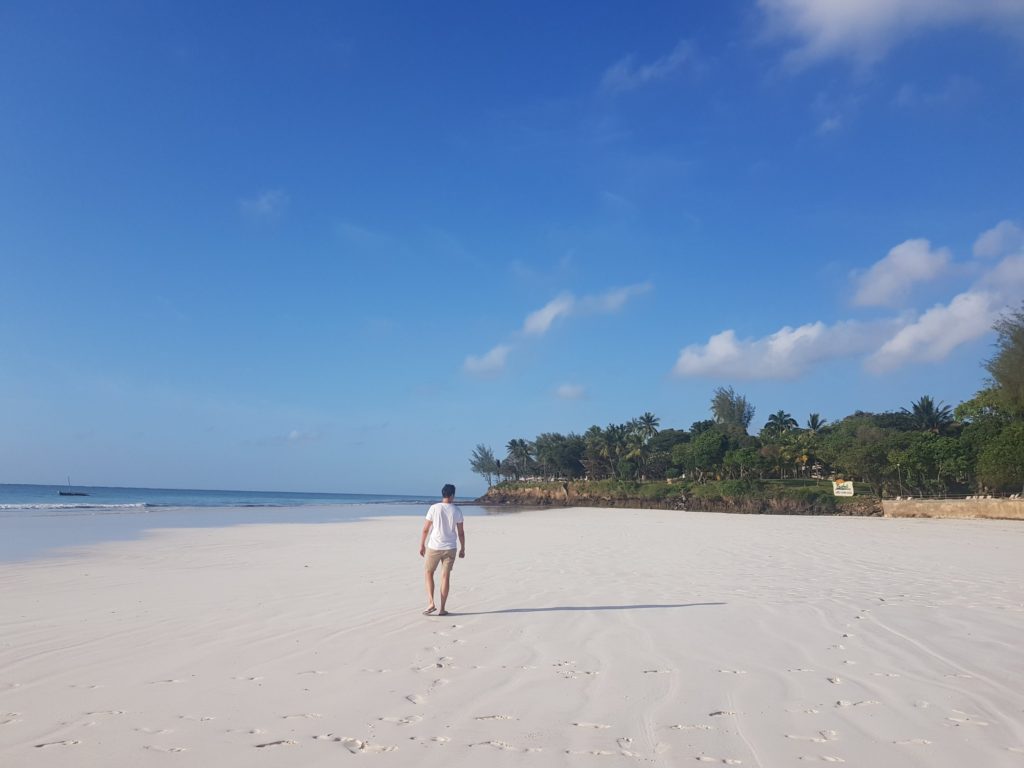
The Mara
The Masai Mara (or Maasai Mara) was the last stop of this East Africa trip. Since I would still consider my four-day safari in Tanzania one of the best travel experiences ever, it was completely okay for me that the Masai Mara was on my program only ten months later. All in all, the visit to the Masai Mara was similar to the visit to the Serengeti National Park in Tanzania, so I will keep it short (if you want a detailed version, you can read my Tanzania travel report).
The Masai Mara, called Mara by the locals, is basically the same national park as the Serengeti. The border between Kenya and Tanzania runs through the park, of which the Masai Mara is the northernmost part. In the Mara you can see the same animals as in the Serengeti, but at a different time of year.
The Great Migration brings almost two million wildebeests accompanied by zebras, gazelles, impalas and other animals in search of water and grass from the Serengeti to the Mara in June, where the animals stay until mid-September. Then the animals migrate back to Tanzania. The Great Migration is often called one of the most phenomenal nature spectacles in the world.
Although we could only observe the migration from a distance, we saw tens of thousands of wildebeests in the park. In contrast to the Serengeti, where the impalas were the animals we saw everywhere, here in the Mara the wildebeests predominated.
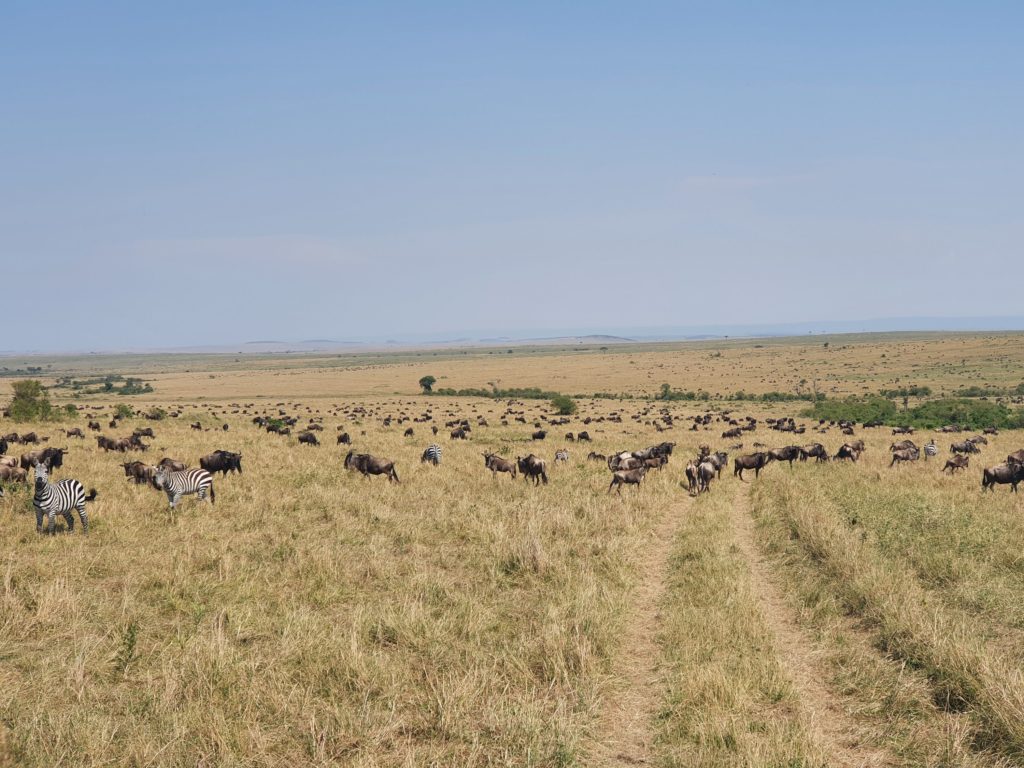
Otherwise, in the Masai Mara you can of course see the Big Five (lion, buffalo, rhino, hippo, leopard), of which we saw everything except the rhino and leopard. The Mara, just like the Serengeti, is a park where you rarely have to drive more than a few minutes to see the next animals.
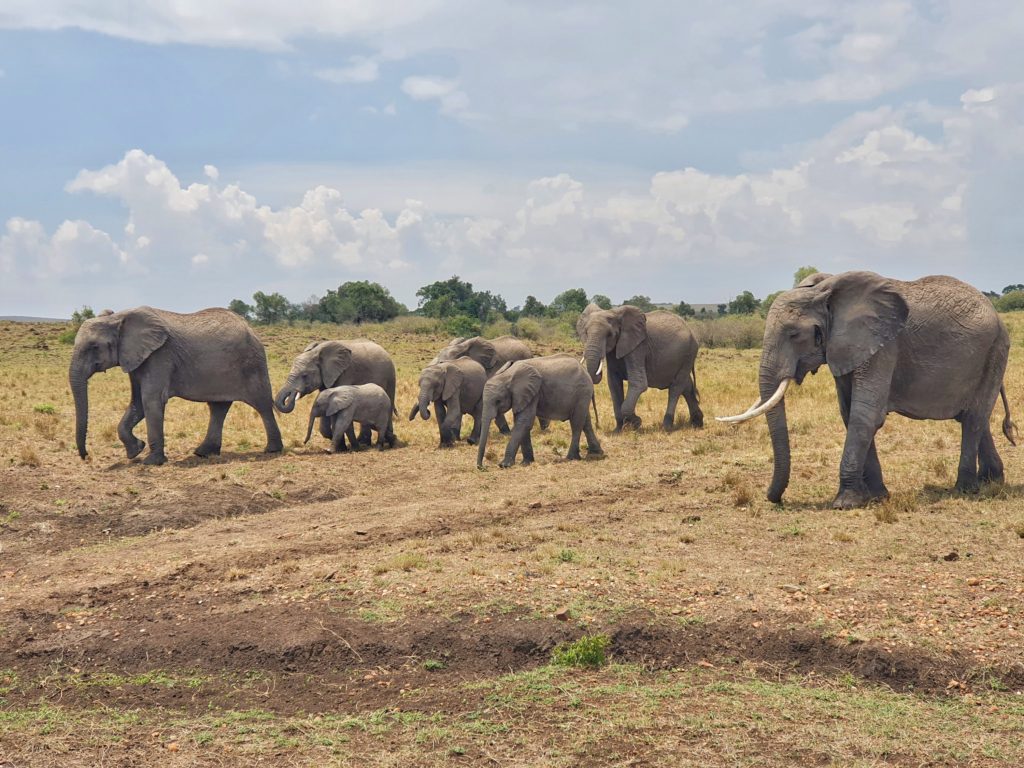
The best activity followed on our second day of the safari. We were picked up from our camp at 4 in the morning. After an hour of driving we got out of the car in the middle of the park, where under the observation of some hyenas a hot air balloon was prepared, with which we should fly over the Mara in the next hour.
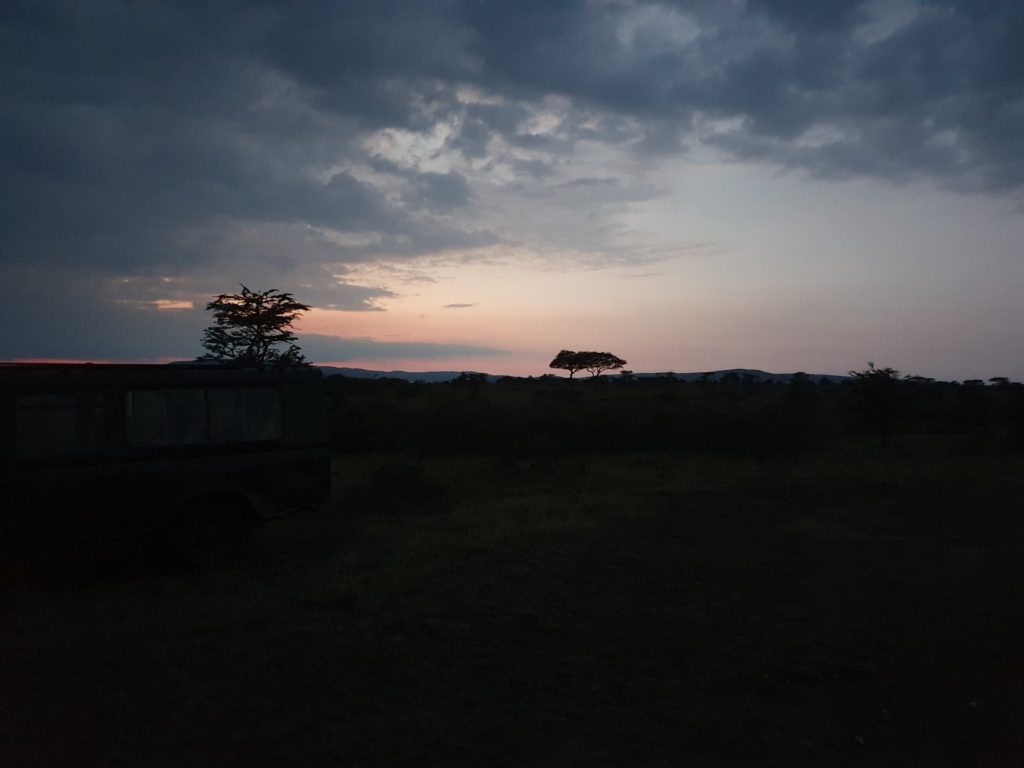
At the moment there is a Corona discount on most tourist attractions in Kenya. So we paid just 290 USD per person for our three day safari. The normal price for a budget safari is about 450 USD. Also the balloon safaris are currently cheaper. While the normal price is between 450-495 USD, it is currently 350-400 USD. So we practically could not say no.
When the balloon ascended into the air, the sun rose over the Masai Mara. And so we flew over the national park and could admire the landscape from above.
The real highlight is of course to see the animals from above. Also from the bird perspective it became clear how many wildebeests are in this park. As soon as we approached a herd, the animals ran in all directions. The noise that appeared when the balloon heated up caused the animals to make a full sprint.
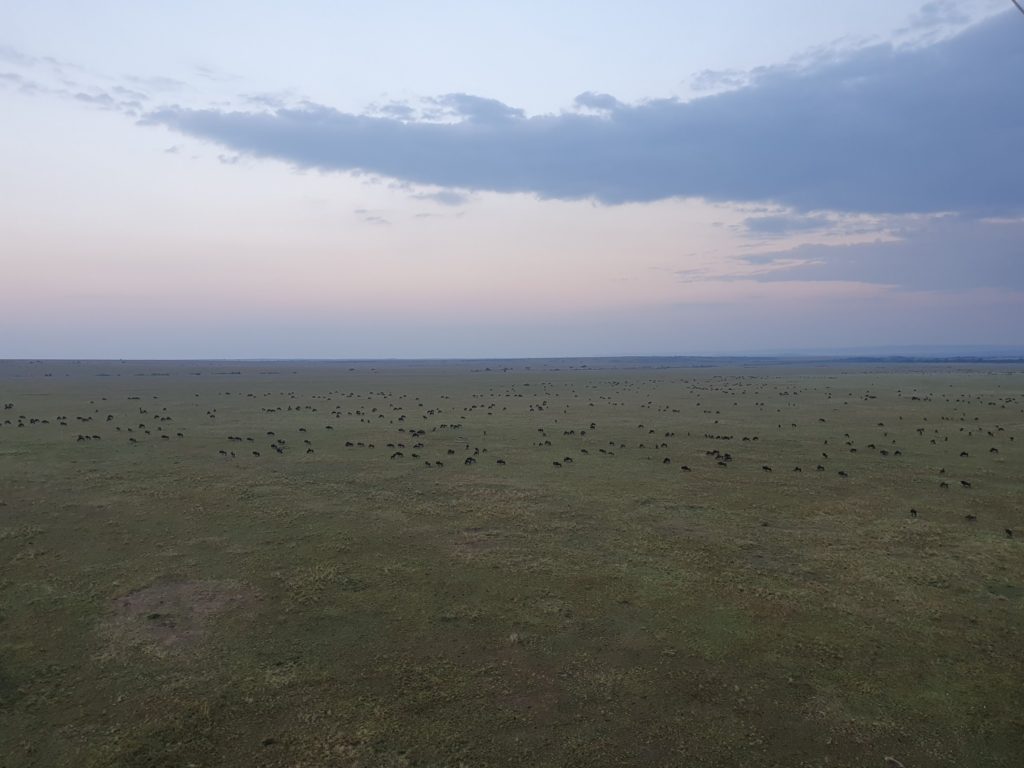
Besides the wildebeests we saw impalas, zebras and buffaloes, the most impressive being a small family of elephants. The elephants took cover just like the wildebeests when the balloon approached. This big thing in the sky did not seem to be very trustworthy for the animals.
The good thing about a balloon safari is that you fly at a relatively low altitude about 75% of the time so you can see the animals well. In the remaining 25% you are so high up that you can see the magnificence and the vastness of the park even better.
The hour literally flew by. As soon as our time was over, we landed again in the middle of the Masai Mara. There, the crew of the balloon safari welcomed us with a champagne breakfast.
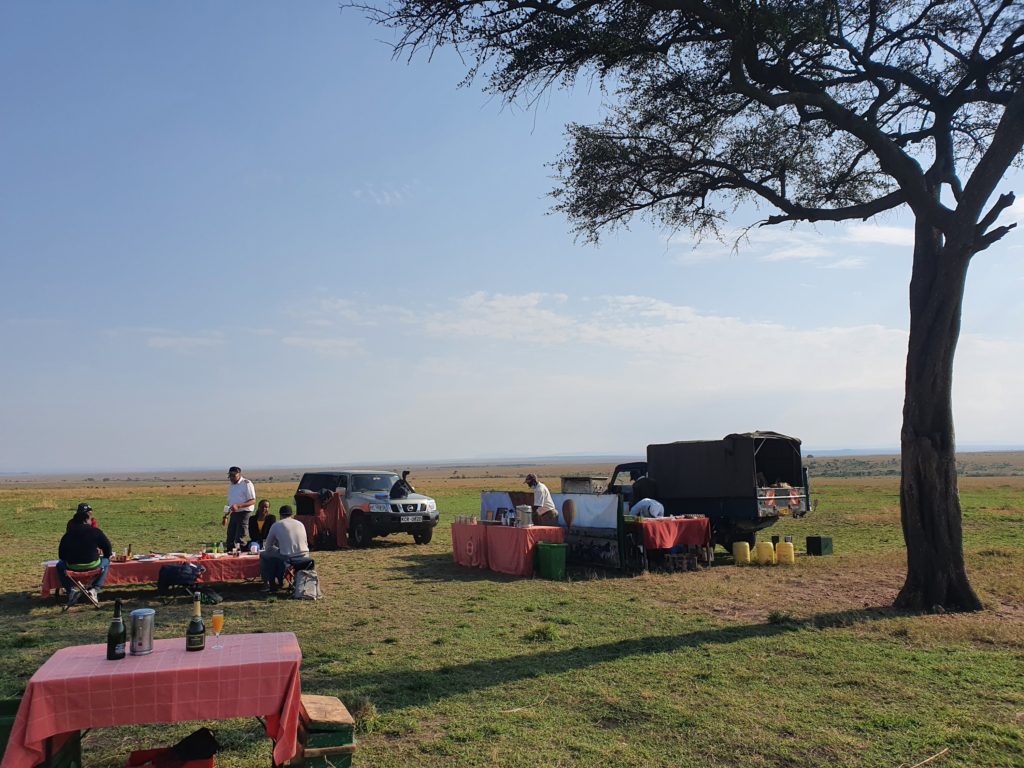
For me personally, the balloon safari in the Masai Mara is one of my top 10 travel experiences ever. Despite the fact that it is not cheap, I can recommend this activity to everyone who is in the Mara. In the Serengeti you can also do it by the way.
After we used the rest of the day for a game drive, our stay in the Masai Mara came to an end. So we spent two hours on the first day and about 12 hours on the second day in the park. For me personally, one full day in the park is enough and another day would have been too much. Actually, we booked a three day safari and skipped the third day in order to be back in Nairobi earlier. You have to keep in mind that a 3-day safari does not mean 3 full days in the park anyway. Usually, you spend 2 hours on the first day in the park, one full day on the second day, and two more hours on the third day.
Nevertheless, the Masai Mara is a fantastic national park and is justifiably called one of the best in the world. At least, it is one of the most beautiful and best national parks I have ever been to.
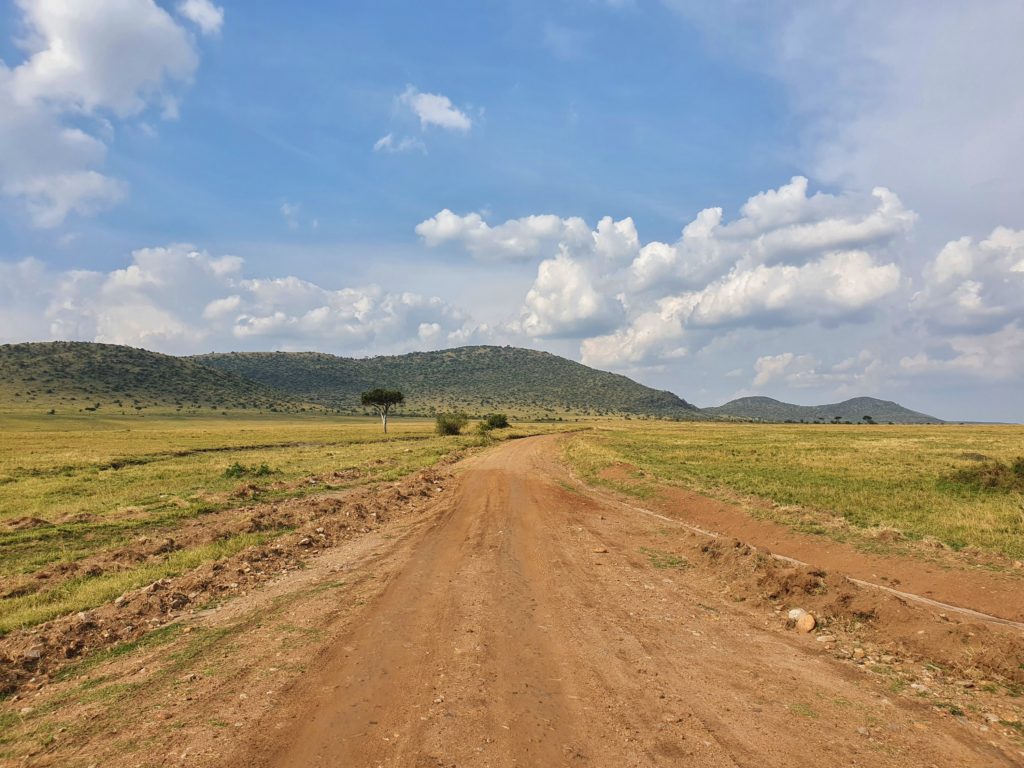
Compared to the safari in Tanzania, the one in Kenya was similar. However, if someone would put a gun to my head and force me to make a recommendation between these two countries, my decision would probably be in favor of Tanzania. But only very narrowly.
The reasons are that in Tanzania you have two incredible national parks (the Serengeti and the Ngorongoro Crater) plus two smaller national parks right next to each other, while you have only one park in Kenya. But even if I had to compare the Serengeti with the Mara, I would describe the Serengeti as minimally better. Although the animals are in fact the same and the Mara has beautiful hilly landscapes, the incredible vastness of the Serengeti is hard to beat.
I also felt the density of safari vehicles higher in the Masai Mara than in the Serengeti. This is astonishing, considering that in September 2020 almost only domestic tourists were in the park and our guide said that there are usually significantly more cars.
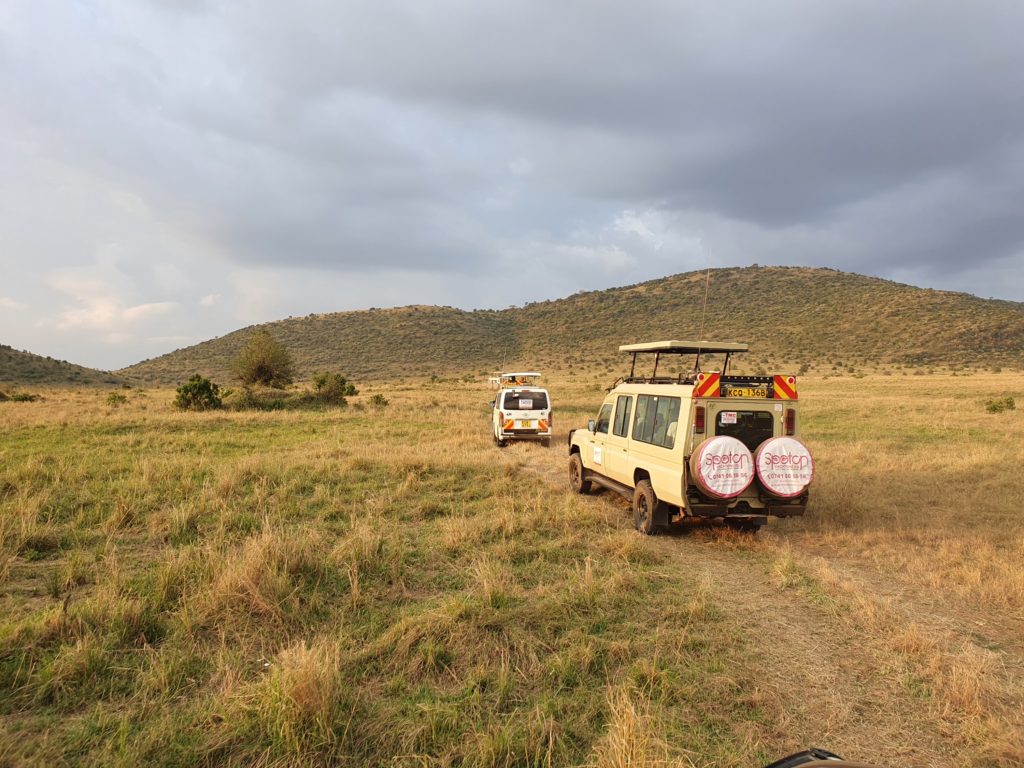
But there are also points where the Mara has an advantage over the Serengeti. For example, a safari in Kenya is cheaper than in Tanzania, where the park entrance fees are horrendous. Furthermore, the safari in Kenya takes less time. If you land in Nairobi in the early morning, you can be in the Mara in the late afternoon, do a game drive all day the next day and fly out of Nairobi in the evening of the following day.
In Tanzania, getting from Dar es Salaam to Arusha often requires another transfer day. And even if you land at Kilimanjaro airport, it is rather unrealistic to arrive in the Serengeti on the same day.
Kenya as a travel destination
Kenya is a heavyweight in East Africa in terms of tourism and certainly one of the best travel destinations on the continent. The country has everything you could wish for: safari, beaches, mountains, lakes… there is even a desert in the south of the country.
It goes without saying that one week in Kenya is far too little and you would need about three weeks to see the country’s main attractions. For example, on this trip I missed Hell’s Gate National Park and Mount Longonot, which are not far from Nairobi. I also didn’t see the real attractions of Nairobi, like the elephant orphanage or the giraffe center.
But that is not too bad, because sooner or later I will surely come back to Nairobi. Either as a stopover when I travel to other countries in Africa (Nairobi is the main hub in East Africa besides Addis Ababa), or if I travel through the country again for a longer time.
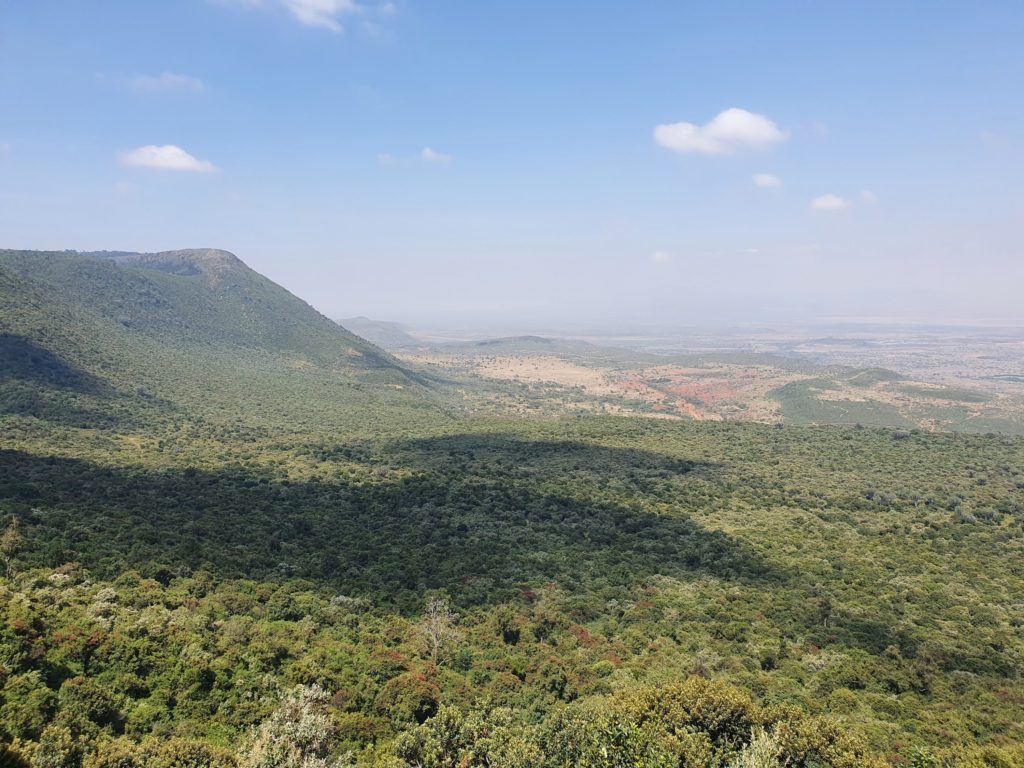
In hindsight, my time in Kenya was almost a 1:1 copy of my Tanzania trip. Instead of the Serengeti and the national parks next door I visited the Masai Mara in Kenya and instead of Zanzibar I spent time at Diani Beach. For me, these two countries are very similar anyway. However, someone who has traveled through both countries for several weeks might disagree with me here.
In conclusion I can say that Kenya together with Rwanda was a worthy summer holiday destination in a very special time. A trip to Kenya has some advantages during the pandemic (very reasonable prices) and also some disadvantages (the beach boys will focus on you only). But no matter if during or after the pandemic, Kenya is a great destination and worth a trip.
